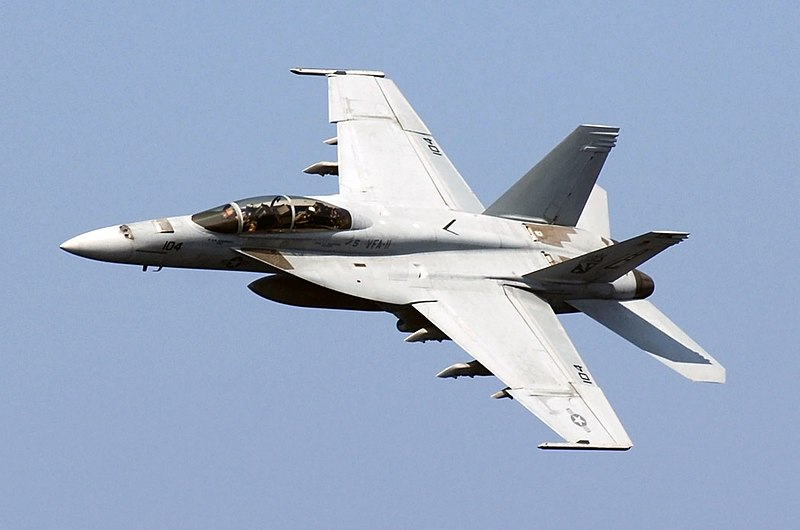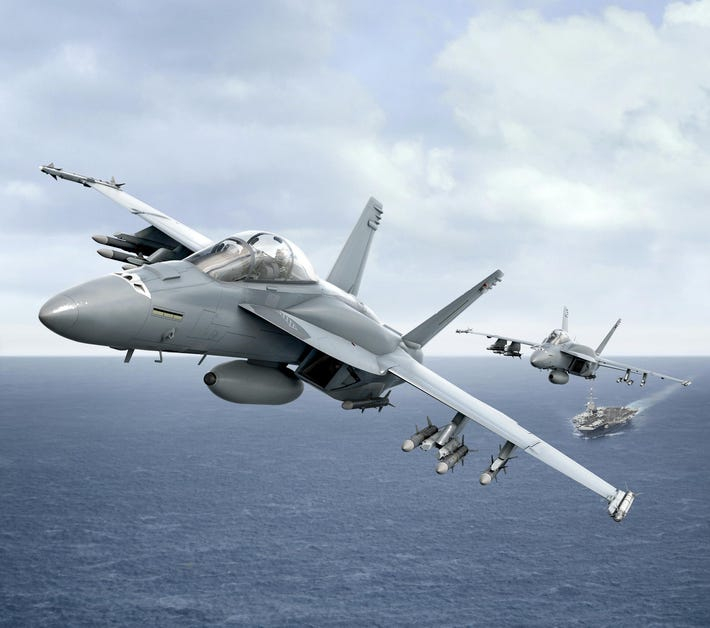F/A-18 E/F Super Hornet
The F/A-I8 E/F SUPER HORNET, which becomes one of the most expensive military weapons in the world, is an improvement to the hornet that is intended for long-term usage. In fact, it is believed that it will remain in use much after its successors, the F-35, do. The navy is using the majority of the models, hence they are situated on aircraft carriers. Each super hornet carries a full complement of air-to-air missiles, air-to-ground missiles, and laser-guided bombs in addition to a 20-millimeter gun for emergency usage.
Based on the McDonnell Douglas F/A-18 Hornet, the Boeing F/A-18 E/F Super Hornet are twin-engine, carrier-capable, multirole fighter aircraft. The larger and more modern F/A-18C and D Hornet derivatives are the single-seat F/A-18E and tandem-seat F/A-18F. The Super Hornet can transport air-to-air missiles and air-to-surface armaments and features an internal 20 mm M61 rotating gun. Up to five external fuel tanks can carry extra gasoline, and an external air-to-air refueling system can convert the aircraft into an airborne tanker.
The Super Hornet was created by McDonnell Douglas and launched into flight in 1995. After the merger of McDonnell Douglas and Boeing, low-rate production started in early 1997, while full-rate production resumed in September 1997. In 1999, the Grumman F-14 Tomcat was replaced by the Super Hornet, which has served alongside the original Hornet since the Grumman F-14 Tomcat was retired in 2006. The Royal Australian Air Force (RAAF), which has been using the General Dynamics F-111C as its primary fighter since 1984, ordered the F/A-18F in 2007. In December 2010, RAAF Super Hornets went into service.
Cost: $65 million
Country: United States












